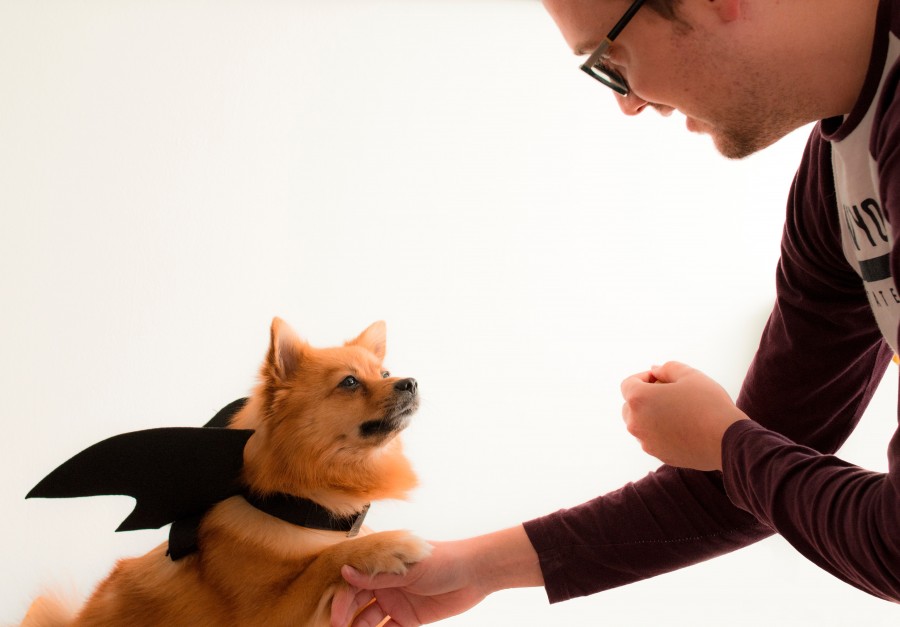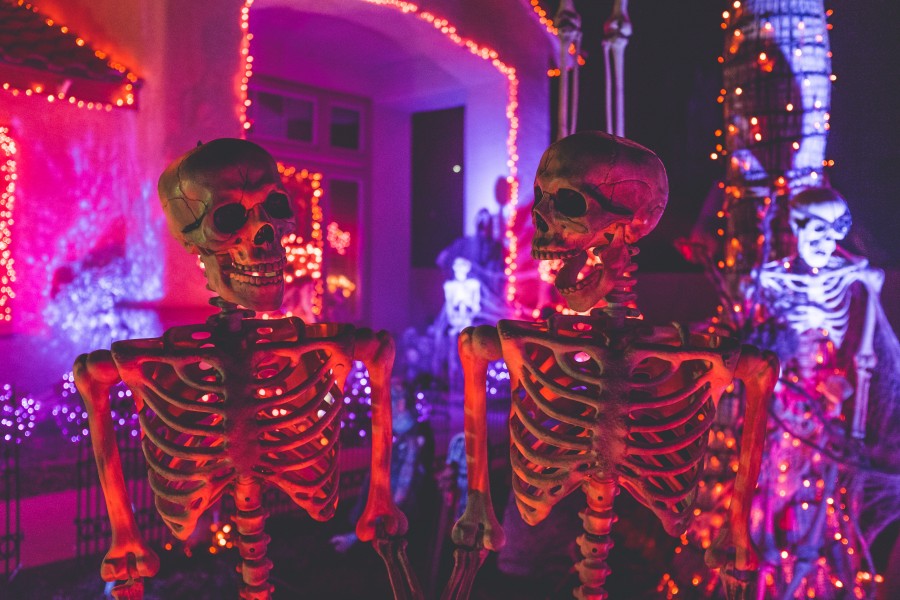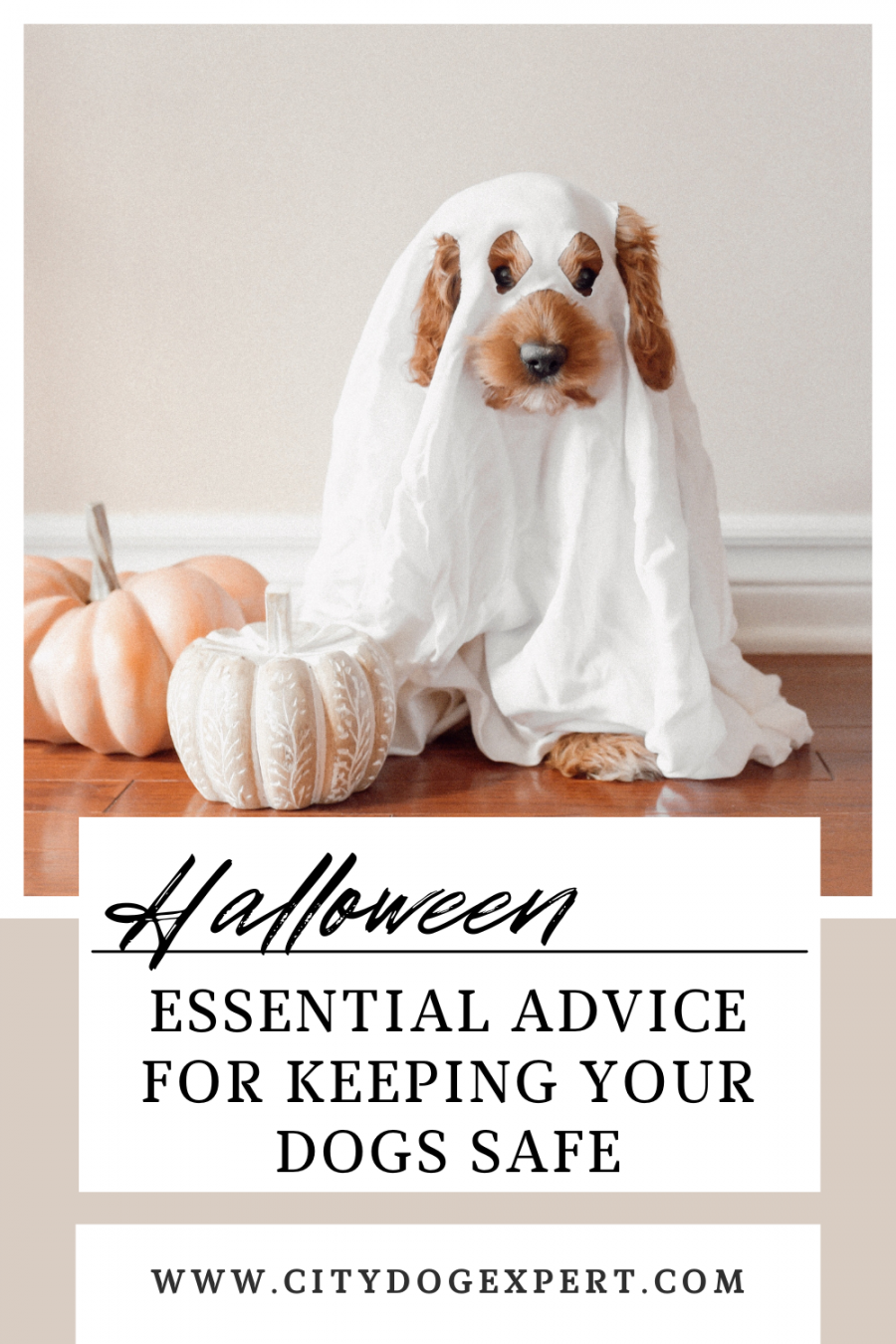
With Halloween just around the corner, planning outfits and stocking up on sweets for trick-or-treaters are not the only things you need to be planning ahead for. Halloween can be a particularly dangerous time for our furry friends, with many things posing a threat to their health and well-being. Not only this, but it could even pose a danger to those that find themselves at your door.

Dr Linda Simon says, “Keeping all sweets and chocolate out of your dogs reach is advised all year long, however with Halloween comes copious amounts of both, so making sure they are kept where your dog cannot get to them is incredibly important.”
“Chocolate is poisonous for dogs, as it contains theobromine and caffeine, which are two stimulants that dogs cannot efficiently metabolise, so ingesting even a small amount can make them quite unwell. Most sweets contain sugar, but some use a sweetener called Xylitol. This is a substance that can cause a potent release of insulin from your dog’s pancreas, thus causing a dangerous drop in blood sugar and even liver failure.”
“It isn’t just the sweets themselves that are harmful to your pooch. The wrappers and packaging pose their own risks. Consumption of these can cause serious internal damage, such as blockages and other issues that could lead to your dog requiring surgery.”
Dr Emma Scales-Theobald, PhD says, “One way to ensure your dog is not eating things that they shouldn’t is to teach them the ‘leave it’ command. Teaching your dog this simple command will ensure you can stop them from consuming anything dangerous.”
“This is a relatively simple command to teach. Start with their favourite edible treat in one hand and a less exciting ‘leave it’ item in the other. Hold the hand with the boring item out, letting your dog get a good sniff and wait for them to move or look away from it. When they do, mark this with a ‘yes’ and reward them with the tasty treat from the other hand.”
“You should practice and repeat this until your dog is consistently looking away or moving away. Once they are, you can then start to add in the cue. Say “leave”, hold out the ‘leave it’ item, then as your pooch looks away, mark and reward. Over time your dog will start to look away as soon as they hear the cue, and you’ll be able to use this for anything you don’t want them getting into!”

Dr Linda Simon says, “As I mentioned in the previous piece of advice, sweets and chocolates are not safe for your dogs to consume. Whilst we adults know the dangers, our children might not. I recommend supervising young children when they are undoubtedly rummaging through their stash and ensuring they are not falling victim to your dog’s best puppy dog eyes and sharing their Halloween haul.”
Dr Emma Scales-Theobald, PhD says, “As important as supervising your children is, it is also well worth teaching them how to behave around dogs, to keep both them and your pet safe. This would be a great time to teach them of the dangers associated with dogs consuming sweets and chocolate as well as teaching them how to enforce the ‘leave it’ command with your dog.”

Dr Linda Simon says, “Whilst pumpkin is actually quite good for your dog, containing lots of nutrients and fibre, consuming it in large quantities can lead to vomiting, pain, and even intestinal blockage.”
“It’s also a common Halloween tradition to pop a tealight candle inside a carved pumpkin, something you absolutely want to keep away from your dog. Not only is it a burn risk, but ingesting candle wax is likely to upset your dog’s tummy. Whilst eating a candle is unlikely to cause serious harm, many candles include chemicals or essential oils that could be more harmful. I would advise sticking to natural/non-toxic tea lights for your pumpkins this Halloween, to avoid any potentially pricey vet trips.”

Dr Emma Scales-Theobald, PhD says, “With Halloween comes an influx of visitors, most of whom are strangers to both you and your dog. Lots of activity at your door can be quite stress-inducing for even the calmest of dogs, but if you have a particularly reactive dog, you need to be sure to prepare ahead of time. Whilst I will always recommend proper training with a professional to correct any reactive behaviours in your dog, there are things you can do to keep your dog calm and safe on the 31st October.”
“If you allow your dog to free roam, the constant knocking and opening of the door could trigger a reaction that could put both your dog and the trick or treaters at risk. This could be the dog escaping or your dog jumping up at and hurting those at the door in the worst-case scenario.”
“I would recommend setting up a room where your dog feels safe with a cosy bed and lots of blankets for them to curl up in. You also want to distract your dog from the sounds of knocking and new voices, so try adding some background noise such as a TV or radio and avert their attention to something that will keep their mind busy, such as a stuffed kong or a particular tasty chew.”

Dr Emma Scales-Theobald, PhD says, “Trying to get a costume on your dog can be quite stressful for both parties, especially your unsuspecting pooch! I suggest getting your dog used to the costume a couple of weeks before Halloween with some positive reinforcement. Start by getting the costume out, laying it on the floor and allowing your dog to get a good sniff, all whilst offering praise and rewarding calm behaviour with a tasty treat. This should build a positive association with the costume.”
“Over the days, you can build this up by gently putting small parts of the costume on your dog and again rewarding calm behaviour, slowly building this up until you can put the whole costume on your dog with no fuss. If, however, your dog seems too stressed throughout this process, then it is best you skip a Halloween outfit. Keeping your dog happy and stress-free is far more important than squeezing them into a costume for one night.”
Dr Linda Simon says, “Putting your dog in a costume is fun and can make for some seriously cute photos, however, making sure it is safe is exceptionally important. Whatever costume you put your dog in should not limit its ability to move comfortably and freely, breathe or bark. If it limits any of these, then do not force your dog to wear it.”
“Another precaution to take is to thoroughly check the costume over for any pieces that can be chewed off and become choking hazards. It, of course, goes without saying that when your dog is in a costume, you should supervise them at all times to ensure their safety.”
“Your dog should be happy to have their costume on for the short time it is on, so make sure to keep an eye on them to ensure at no point they are starting to show signs of distress, anxiousness or even being too hot!”

Dr Linda Simon says, “Halloween poses many risks for your dog, with decorations being one of the largest. Dogs are incredibly inquisitive, and they explore new things with their noses and mouths. If you are someone that likes to decorate their home at Halloween, you need to ensure that all decorations are placed out of reach of your dog and are well secured to avoid your dog getting hold of them.”
“In the event of your dog chewing and ingesting any of your Halloween decorations, you will need to contact your vet as soon as possible. Ingestion of items of this kind can cause a whole host of issues, such from upset stomachs to intestinal blockages, which can become fatal.”
